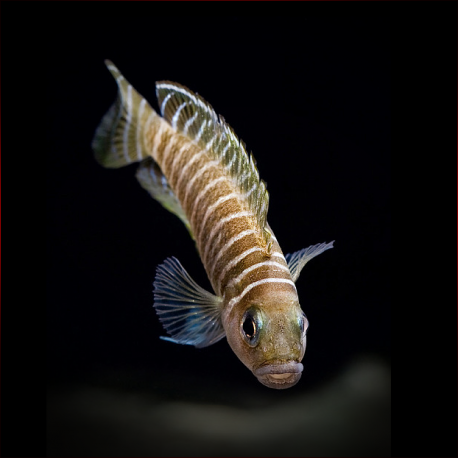More info
Datasheet
| Minimum Tank Size | 40 litres / 10.57 US gallons |
| Maximum Size | 4.5cm / 1.77inches |
| Temperature | 24°C / 75.20°F - 27°C / 80.60°F |
| Hardness | 8-25ºdH |
| pH | 7.5-9.0 |
General Description
Neolamprologus similis, a species of shelldwellers under the Cichlidae family and Pseudocrenilabrinae subfamily, is not commonly seen in the aquarium trade but is known for its distinctive personality. Growing up to 4.5cm in size, these territorial fish establish small territories typically not exceeding 6 inches across, which they fiercely defend. They are easily identified by the additional barring on the head and neck, along with lighter-colored stripes compared to their closely related species Neolamprologus multifasciatus.
Aquarium Setup
For a thriving habitat for Neolamprologus similis, a minimum tank size of 40 liters is recommended. Setting up the aquarium involves providing a substrate of fine sand with ample empty snail shells, more than the number of individual fish present. Unlike other shelldwellers, they prefer a shallower substrate and are not extensive diggers. Water conditions should have a hardness of 8-25°dH, pH levels between 7.5-9.0, and a temperature ranging from 24-27°C.
Behaviour
Known for their territorial nature, Neolamprologus similis will fiercely defend their shells and small territories. While they can cohabit with other species dwelling in different zones of the tank, it is advisable to choose tankmates wisely. Ideal companions include small rock-dwellers like Neolamprologus brichardi, smaller Julidochromis species, and open water species such as Cyprichromis. In multiple fish setups, Neolamprologus similis can form a colony, with a recommendation to keep more females than males to alleviate aggression.
Feeding and Diet
Neolamprologus similis primarily thrives on live and frozen food varieties, with dried foods also accepted but not as a sole diet source. To maintain their health and vibrancy, a varied diet is crucial for these shelldwellers.
Reproduction & Dimorphism
Reproduction in Neolamprologus similis is relatively simple as they are shell brooders. While they may breed in a community tank, for optimal breeding conditions, a separate tank is recommended. Females lay their eggs inside snail shells, with males fertilizing them either externally or within the shell. Adult males are noticeably larger than females, and they may develop a small nuchal hump as they mature.
Habitat and Distribution
Endemic to Lake Tanganyika, Neolamprologus similis inhabits areas near the lake's shorelines with soft substrates where empty snail shells accumulate. Their natural habitat comprises territories established around these shell collections.

